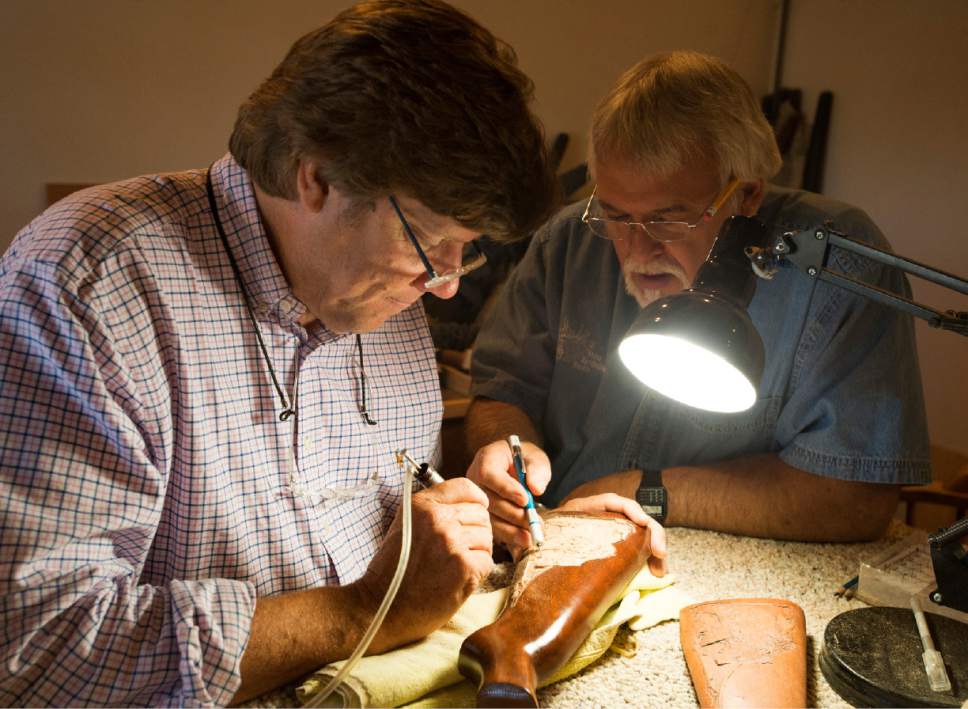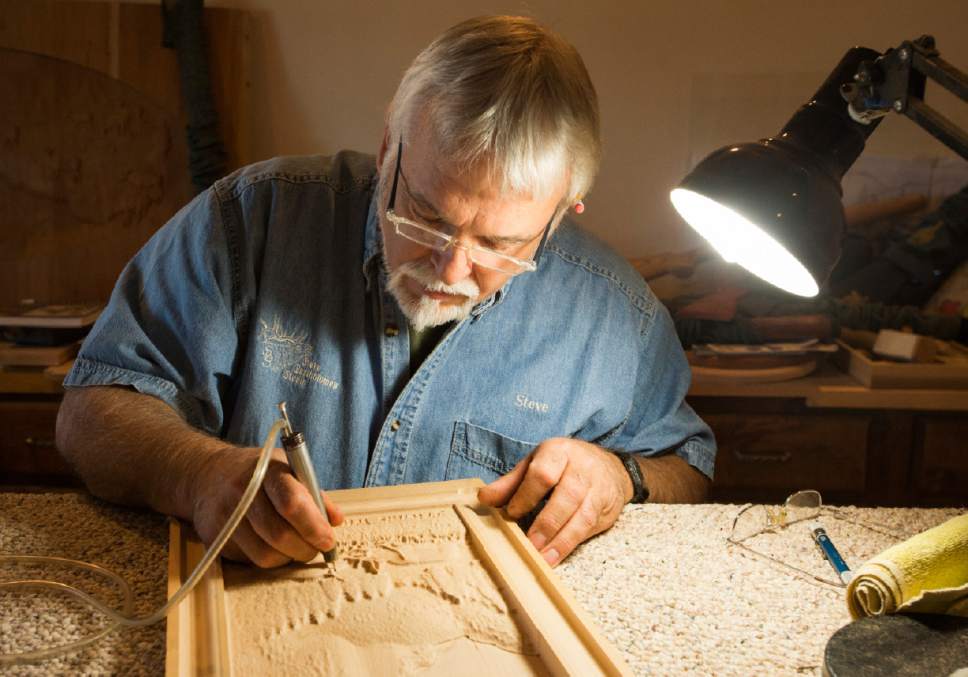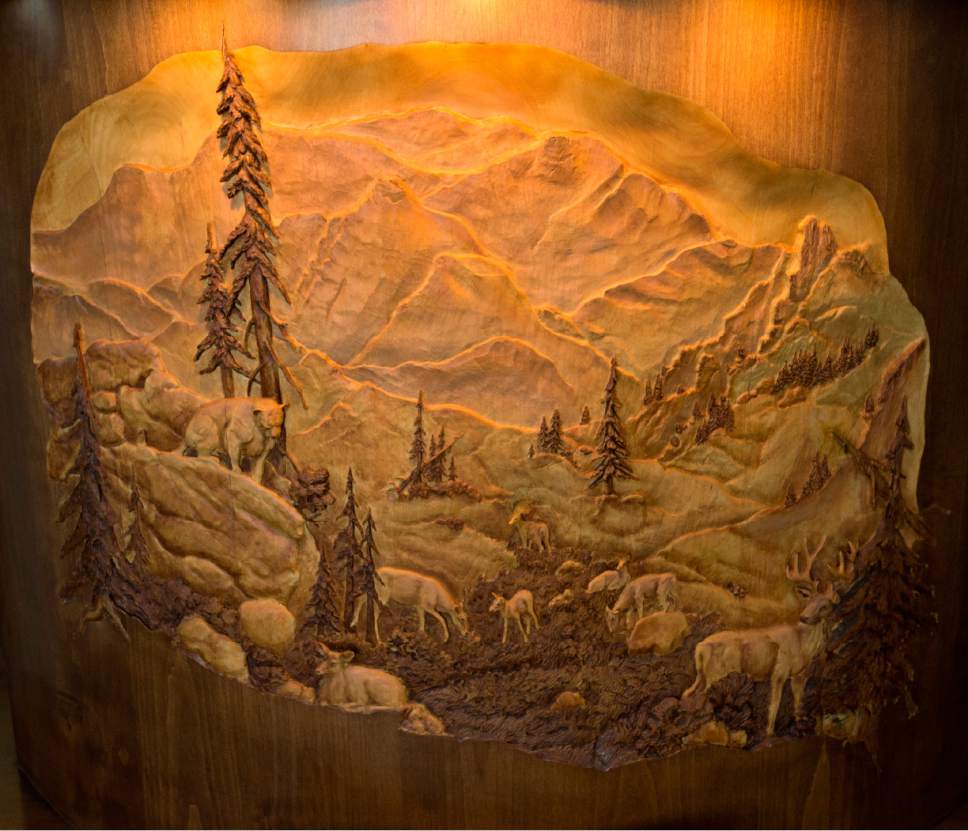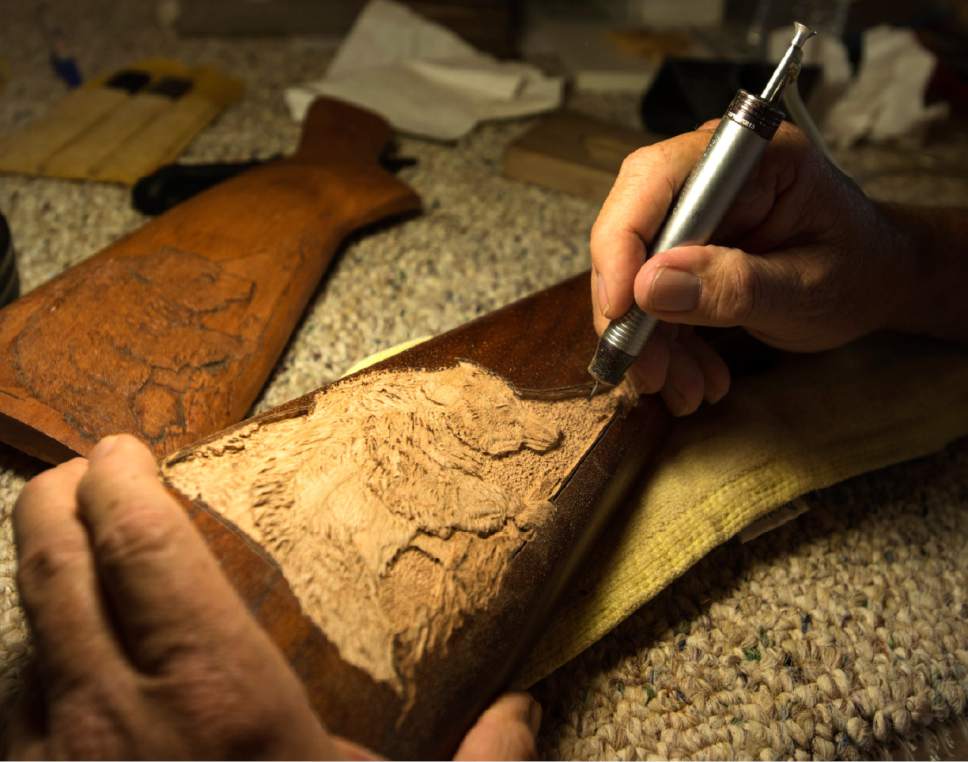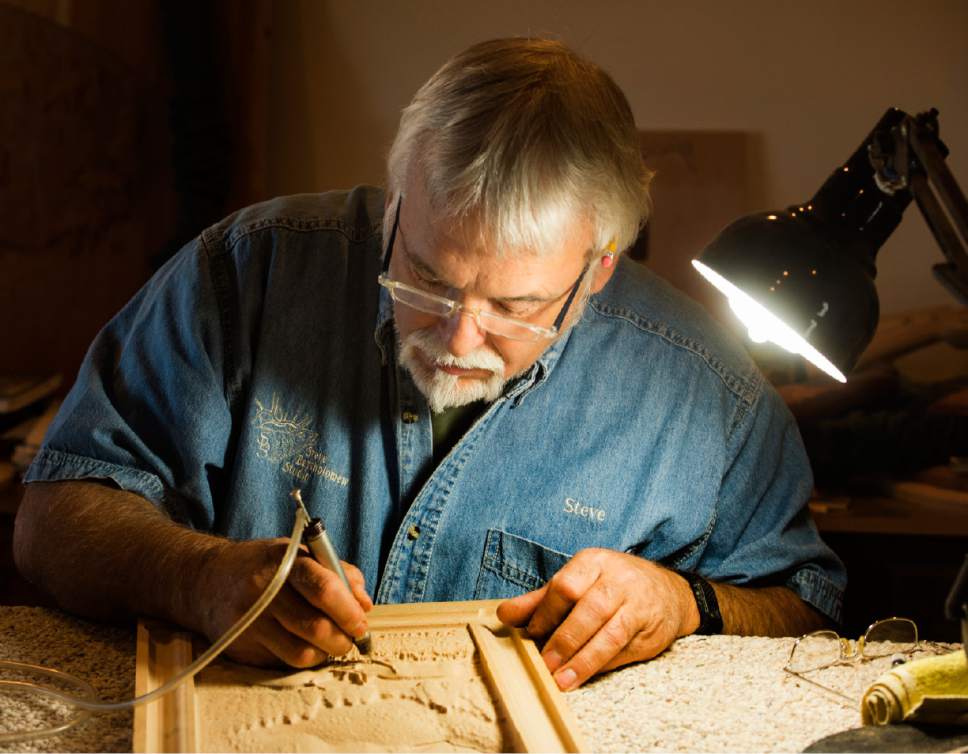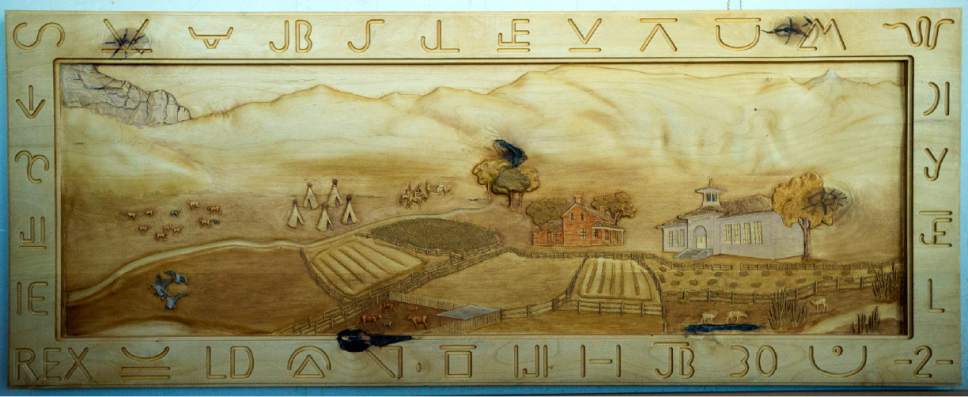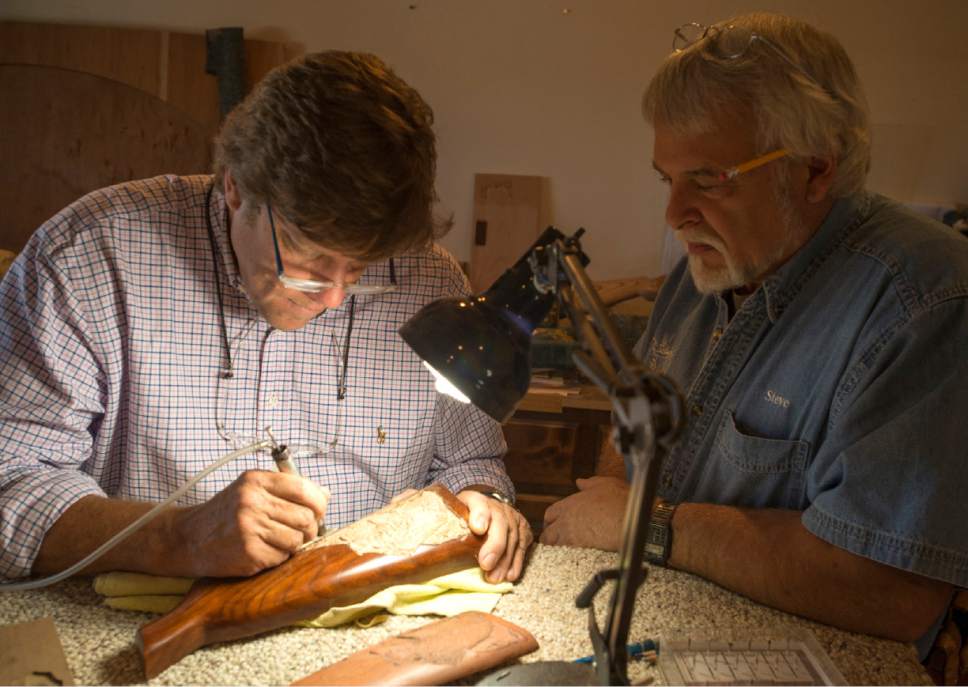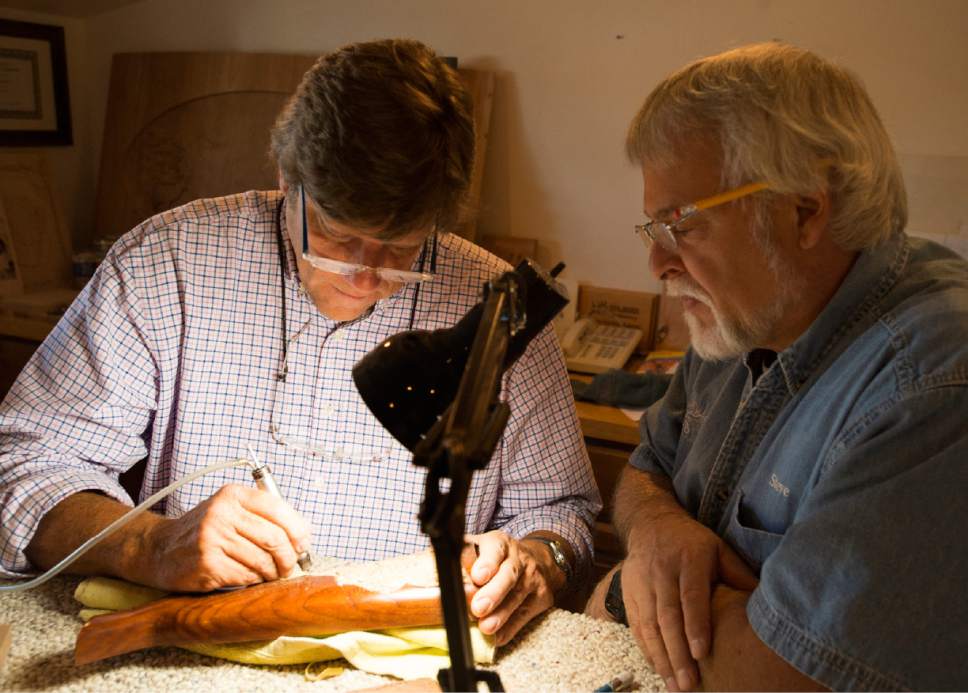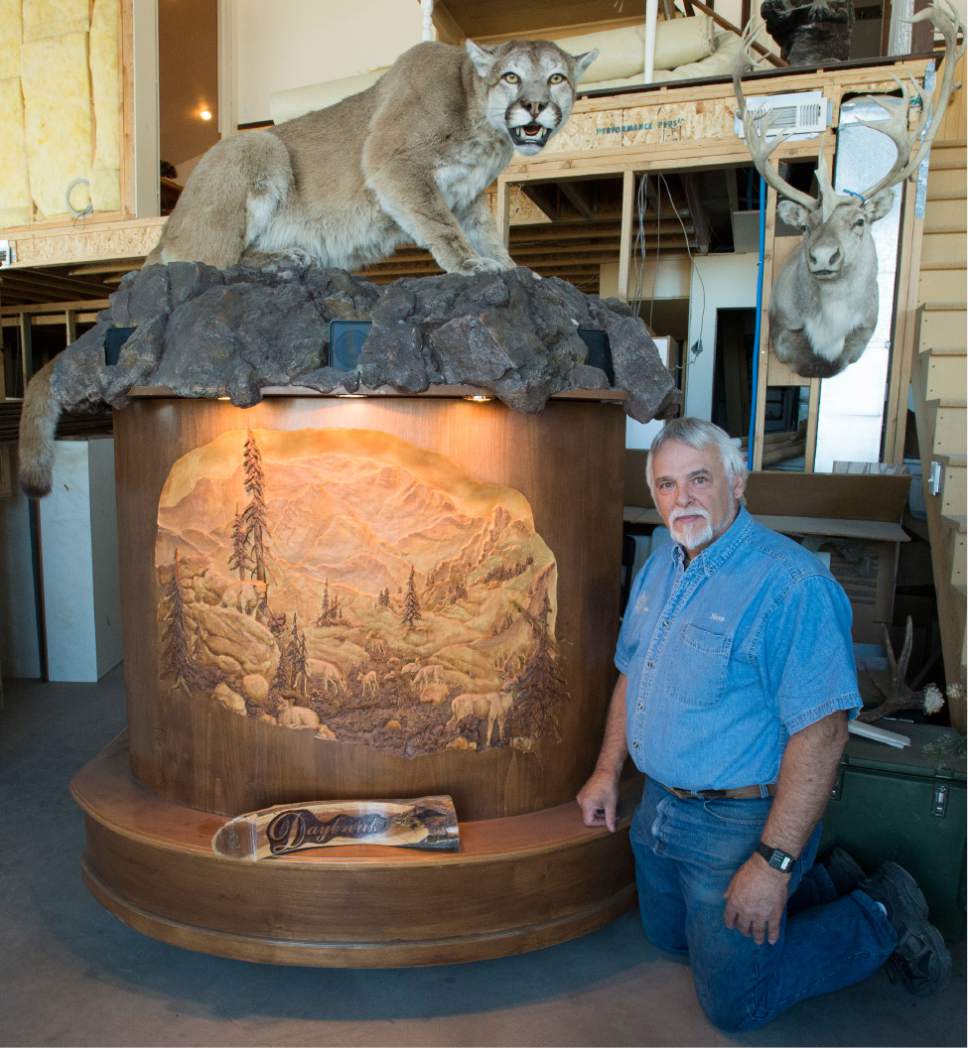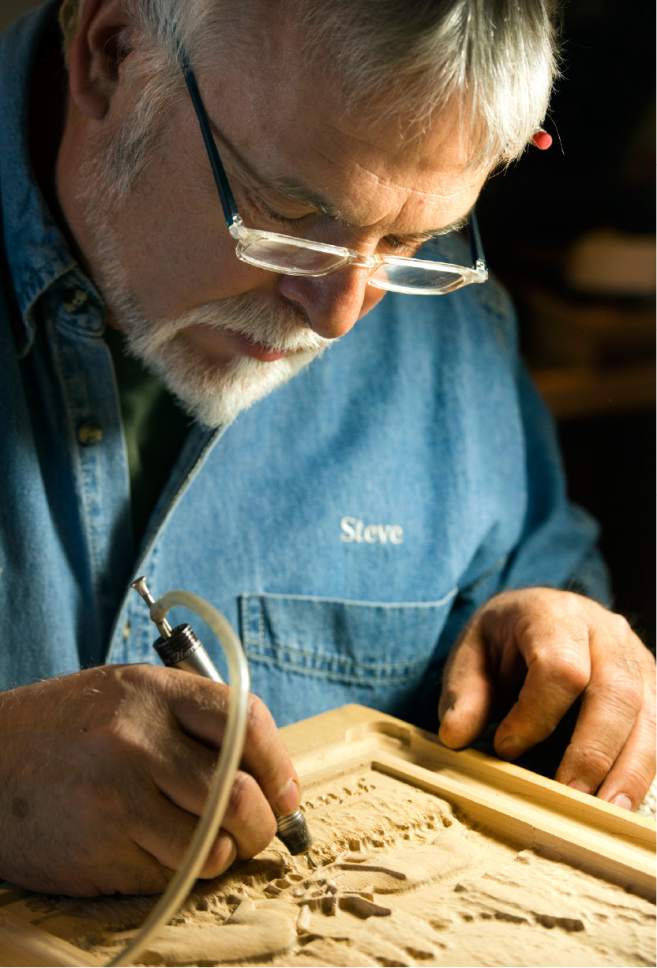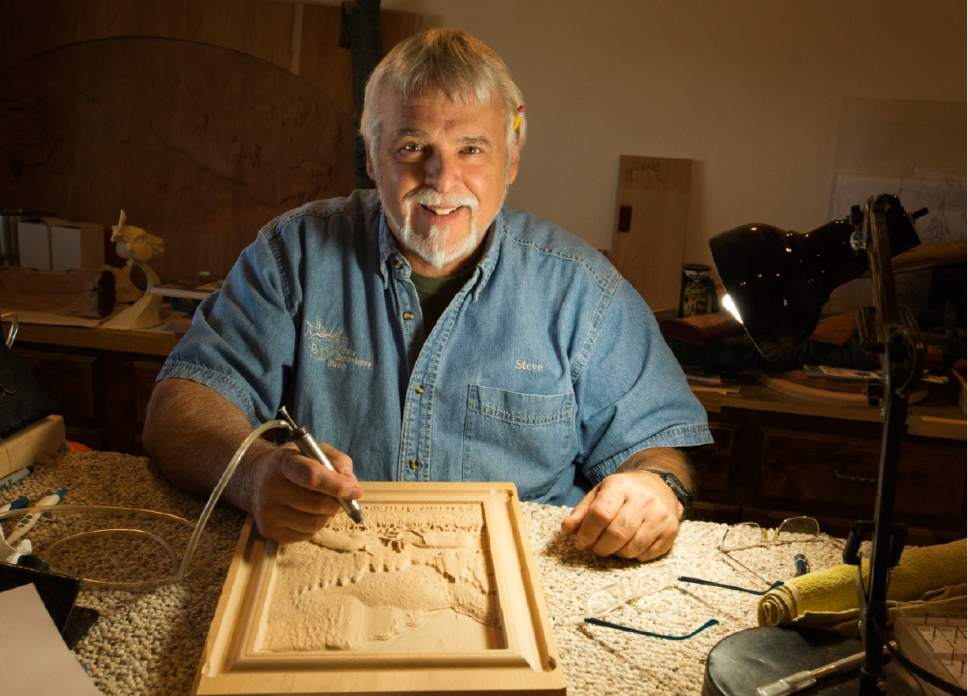This is an archived article that was published on sltrib.com in 2017, and information in the article may be outdated. It is provided only for personal research purposes and may not be reprinted.
Cedar City • Woodcarver Steve Bartholomew came so close to an elk as a boy that he could see the bull's bloodshot eyes as it racked its horns against a tree. And once he stood still enough that a cow elk sauntered up to sniff the top of his head. His love of wildlife became so much a part of his life that today he carves outdoor wonders into furniture, wall decor, gun stocks and taxidermy bases. One of his award-winning carvings is a pedestal that depicts a clifftop and rests beneath a mounted wild mountain goat.
"Experiences like these have helped me develop a love and respect for wild animals, which I believe helped me capture them in my art carvings," he said. "In an outdoor setting or anywhere you go, you gain an understanding and an inspiration."
Bartholomew has created custom cabinets and furniture from his studio on Main Street in Cedar City for more than 35 years, and for the past 12 years he also has turned his attention to carving. Many of the scenes depict finely detailed historical buildings, landscapes and wildlife. He traces his passion for the outdoors to the times he accompanied his father to the mountains in central Utah's Sanpete County to check on their sheep herd. At some point, Bartholomew began noticing unique features surrounding him. He saw that a tree wasn't simply lumber to be chopped into firewood. Each was a creation with unique properties: the bent of the trunk, the spread of the side branches, the different shapes of the leaf clusters.
Before he begins a carving, he asks his client how generic or unique the images should be. He discusses the purpose of the artwork and he looks for a story the client may want to tell in the carving.
That is evident in a carving the mayor of Fayette (pop. 300) had commissioned in 2008, which hangs in the town hall. Bartholomew knows the hamlet's history well. His ancestors settled the area and he was reared there.
Working from old photographs the mayor provided, the 4-by-10-foot carving features an old home that his great-great-grandfather built, and what was once a school house. Some tell the story that native Utahn Philo Farnsworth taught at the school years before he came upon the idea of how pictures could be transmitted into the air (as the inventor of television).
The Fayette carving also features mountain scenes: the prominent rock ledges of Mellor's Canyon, the rugged Caterpillar Mountain Range and Molly's Nipple provocatively peeking through the lower hills. Bordering the carving are replicas of each livestock brand registered to local ranchers.
His mentor, Craig Horne, of Spanish Fork, who creates high-end sculptures in wood, bronze and stone, said Bartholomew has achieved excellence through determination and hard work. He adds that so-called natural gifts cannot take an artist far in any craft.
"Steve takes the long view; he has been dedicated to his work for quite a few years," said Horne. "He has a deliberateness, a way of working and practicing. He is determined in what he does. He's dedicated, he shares his work with confidence."
Bartholomew began carving using gougers and chisels. He then expanded his art by using small shaft-driven electric tools. All had different looks and uses. But he learned that air-driven modified dental instruments brought out details in the wood that cannot be duplicated. The difference was going from 3,400 revolutions per minute to as high as 500,000 rpm. (He prefers a Hurricane that runs at 35,000 rpm. It has more torque and the noise level is not as high-pitched as the fastest carving tools.)
He said of the power tools: "That's where the magic comes in."
His artwork has won numerous prizes at local and state fairs, and in 2013 he won national recognition at the North Carolina-based Veneer competition for a forest scene, "Daybreak."
He also teaches.
"At the start of classes I want them to be able to reach goals they have set for themselves, depending on their desire and ability," he said. "We start with a design, which most of the time is a leaf or a set of leaves. I want them to get a feel for the tool and for the burr. Usually the design is a small carving on a gun stock."
Jerry Hale, from Tyler, Texas, was at a Dallas outdoor trade show when he saw some of Bartholomew's carvings. He was so impressed that he asked for personal lessons. He traveled to southern Utah in mid-June for a three-day workshop.
"Right now, I'm scratching out a maple leaf," Hale said. "I'm learning how to work the high-speed equipment. There's a lot of parts and pieces for doing these kinds of things. It's fascinating to see the finished work. You just don't realize all the many steps and effort that goes into a carving."
Bartholomew has carved fireplace mantels, cedar chests, chairs, bars, even a coffin topped with a carving of the Manti LDS Temple. Each scene is detailed, with horses that seem to be galloping across the frame and grasses that appear to be moving with the wind. He often brings some of his pieces to trade shows in Dallas, Reno, Nev., and Las Vegas. But he always brings a small replica of the Fayette "My Little Town" carving — the place where it all began. —
Fayette's brush with history
A story that television inventor Philo T. Farnsworth taught school in the hamlet of Fayette is being told less and less as old-timers in central Utah die out.
One of the founding clans in Fayette points to Henry and Iretta Bartholomew, who boarded Utah's acclaimed native son years before Farnsworth transmitted pictures into the air via an "image dissector." The Bartholomews had been so impressed with the young Farnsworth that they named their son after him. The exact time is unknown, but the encounter in Fayette had to be before 1925, when the child was born.
"My name is John Philo Bartholomew," wrote Farnsworth's namesake, who died in 2010. "I suppose the John was given to me because of my grandfather, John Bartholomew. My middle name came from Philo Farnsworth, the inventor of television who was a close friend of the family at the time of my birth. When Philo was a young man, he was teaching school in Fayette and boarded with my parents."
"It has been our family's tradition that Philo Farnsworth lived in my grandparents' home," said Sandra Bartholomew Lytle of Pioche, Nev. "I don't know of any records other than stories and remembrances."
The inventor's wife, Elma G. Farnsworth, did not mention that teaching assignment in her book, "Distant Vision: Romance and Discovery of an Invisible Frontier."
She told the story of her husband's life and his boyhood epiphany that led to the invention of his "image dissector."
Philo Farnsworth was a 14-year-old Idaho farmboy, plowing his father's potato field, when the furrowed rows gave him the vision that pictures could be transmitted electronically — line by line, row by row. He was 21 when he transmitted the first television image in 1927: a single rotating line from a camera to a cathode ray tube for viewing in another room.
His wife's face was one of the first images to be transmitted.


